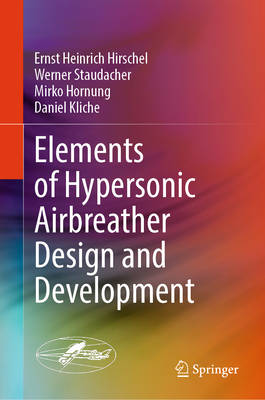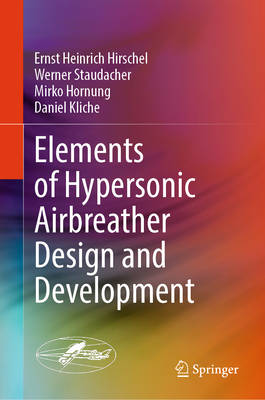
- Retrait gratuit dans votre magasin Club
- 7.000.000 titres dans notre catalogue
- Payer en toute sécurité
- Toujours un magasin près de chez vous
- Retrait gratuit dans votre magasin Club
- 7.000.0000 titres dans notre catalogue
- Payer en toute sécurité
- Toujours un magasin près de chez vous
Elements of Hypersonic Airbreather Design and Development
Ernst Heinrich Hirschel, Werner Staudacher, Mirko Hornung, Daniel Kliche
Livre relié | Anglais
244,45 €
+ 488 points
Description
This book sketches key design, development, and engineering issues. To think up an airbreathing hypersonic aircraft is one thing; to design, develop, and produce it is another one. Airframe-propulsion integration plays a central role, with six integration types identified. Most demanding is that of a large aircraft with both lift and propulsion located at its lower side--an approach exemplified early by the US National Aerospace Plane. Topics treated are the flight environment, design sensitivities, fuel considerations, aerothermodynamics, scramjet propulsion, airframe-propulsion integration, structural and materials issues, and aerothermoelasticity. Persistent challenges include laminar-turbulent transition and joint modelling. Capabilities and shortcomings of experimental, computational, and in-flight simulation are considered. The second wave of mathematization--culminating in the concept of the virtual product--has fundamentally transformed flight vehicle design, enabling integrated, high-fidelity simulation across disciplines. In this book, students, design engineers, and technical managers will find ample insight and practical knowledge regarding hypersonic airbreather design.
Spécifications
Parties prenantes
- Auteur(s) :
- Editeur:
Contenu
- Nombre de pages :
- 323
- Langue:
- Anglais
Caractéristiques
- EAN:
- 9783031942181
- Date de parution :
- 19-10-25
- Format:
- Livre relié
- Format numérique:
- Genaaid
- Dimensions :
- 155 mm x 235 mm

Les avis
Nous publions uniquement les avis qui respectent les conditions requises. Consultez nos conditions pour les avis.






